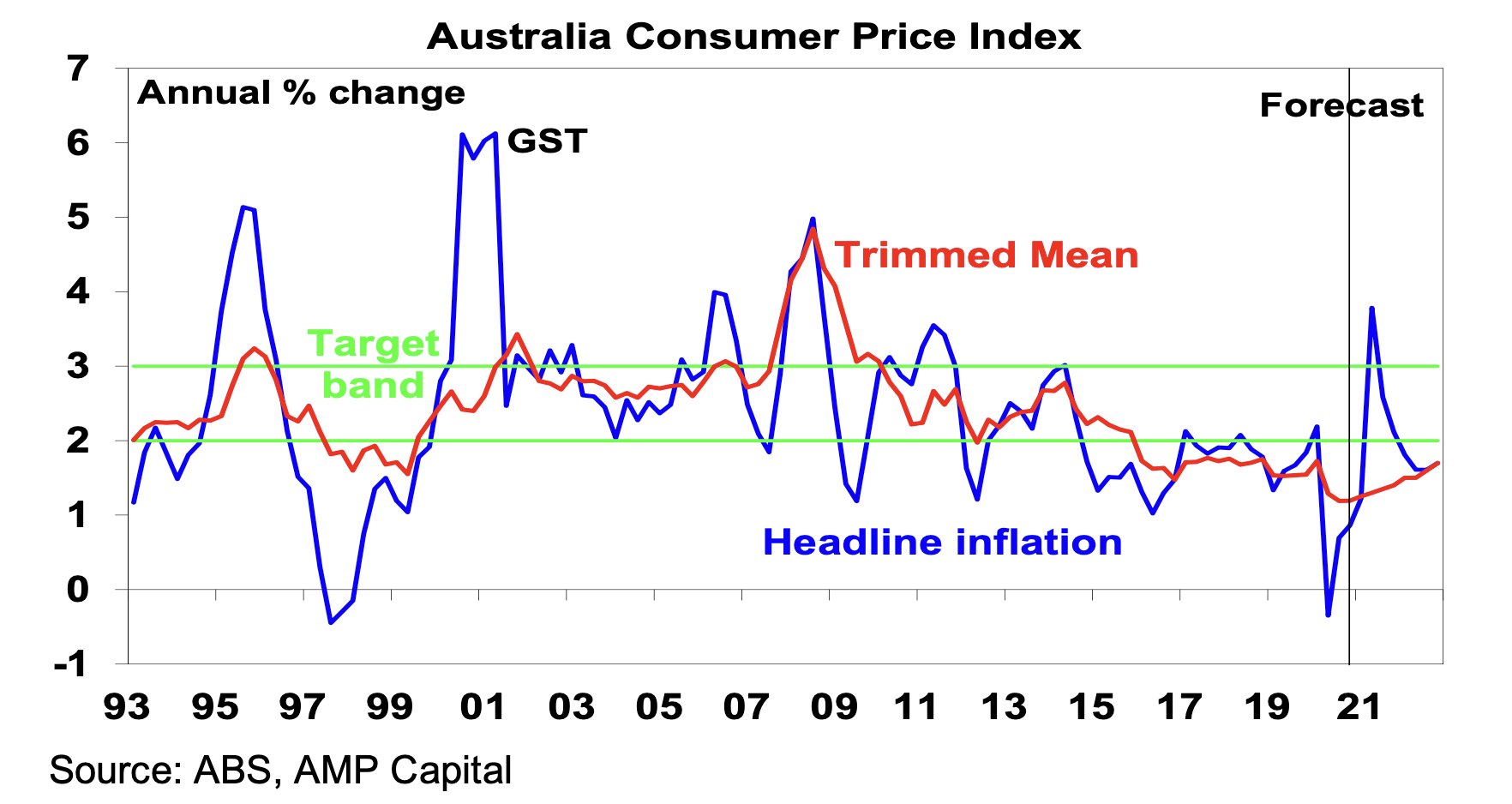Job ads reach 12-year highs but no signs of change from Lowe

Livewire Markets
No one expects a rate change from the RBA any time soon, but some leading experts believe it might happen sooner than we think.
With no change to rates, all eyes were on the RBA's accompanying statement - what will the RBA barometer read into the unemployment rate and wages growth? Other eyes were still hungering for housing price commentary, but they would have found today's statement lacking.
Governor Philip Lowe has remained firm about the 'lower for longer narrative', keeping rates unchanged in today's RBA announcement.
We're in a post-JobKeeper world now, but that doesn't seem to be slowing down most businesses. ANZ today reported job advertisements up 7.4% month-on-month in March to reach a 12-year high of 190,000 available jobs. This is in line with the most recent ABS data on job vacancies, which showed both public and private sector vacancies are up through the year.
We asked leading Australian economists and investment strategists to weigh in on the latest announcements from the RBA, including Shane Oliver, chief economist and head of investment strategy at AMP Capital, Kate Samranvedhya deputy chief investment officer for Jamieson Coote Bonds.
Rate hikes could come sooner than we think
First, here are our experts on interest rates:
"Given the speed of the recovery, we think there is a good chance that the RBA’s objectives for a rate hike will be achieved before the “2024 at the earliest” that it refers to and so are allowing for a first-rate hike in late 2023," said Shane Oliver.
"But that’s still a long way off. Key to watch will be unemployment heading towards 4% and wages growth heading above 3%."
Samranvedhya said to look carefully at the final paragraph of the RBA's recent statement:
"The way they word the paragraph, the conditions they actually commit to is when inflation is sustainably between 2-3%. That's the commitment. So I think we have to make a distinction between what they have committed to versus what they think that term might be," she said.
"Guy Debelle (deputy RBA governor) has previously said this target is 'not a pledge'. That's the key takeaway for me," said Samranvedhya.
Here are the top three takeaways from today's statement
#1 Employment is outperforming expectations
We're in a post-JobKeeper world now, but that doesn't seem to be slowing down most businesses. ANZ today reported job advertisements up 7.4% month-on-month in March to reach a 12-year high of 190,000 available jobs. This is in line with the most recent ABS data on job vacancies, which showed both public and private sector vacancies are up through the year.
"Employment has now recovered 99.8% of the jobs lost in the lockdown. While the end of JobKeeper may see a slight rise in unemployment this is likely to be modest given a sharp decline in those working zero or significantly reduced hours and job ads running well above year-ago levels," said Shane Oliver
But the RBA said this alone isn't enough to shift rates:
"Nevertheless, wage and price pressures are subdued and are expected to remain so for some years. The economy is operating with considerable spare capacity and unemployment is still too high. It will take some time to reduce this spare capacity and for the labour market to be tight enough to generate wage increases that are consistent with achieving the inflation target," said Lowe.
#2 Inflation will spike this year, but that still won't change rates
"In the short term, CPI inflation is expected to rise temporarily because of the reversal of some COVID-19-related price reductions. Looking through this, underlying inflation is expected to remain below 2 per cent over the next few years," said the RBA.
But how high can this temporary rise go?
"We will have an overshoot in inflation from base effect by the middle of the year," said Samranvedhya.
"A lot of economists are reading 3% or beyond 3% inflation. But the key thing is this is the base effect kicking in. We're just getting out of the pandemic. The real data points to look at are probably the fourth quarter of this year, which should be released by the end of January," she said.
AMP puts that figure even higher.
"Annual headline inflation is likely to rise towards 4% this quarter as last June quarter’s price falls drop out of annual calculations, higher oil and commodity prices along with goods supply bottlenecks impact and flood driven rises in fresh fruit and vegetable prices in Australia impact," said Oliver.
This means that despite some signs of inflationary pressures throughout 2021, we're coming off a low base. So, the RBA won't be deterred from its course if we see higher levels of inflation this year. And they would be "nuts" to lower their target, said Oliver.

#3 Plenty more runway for QE-infinity and bond market tantrums
The official statement from the RBA reads:
"The Board remains committed to the 3-year government bond yield target of 10 basis points. Later in the year, it will consider whether to retain the April 2024 bond as the target bond or to shift to the next maturity."
Samranvedhya said an RBA shift in bond maturities will be a "powerful sign" to markets.
Small movements in bond markets tend to have huge ripple effects for the rest of the market and Samranvedhya believes a shift to the next maturity would be the November 2024 bond.
"It will be the start of their gradual exit from buying," she said.
"It signals the relative stance of the RBA. So whether they will maintain easy monetary conditions, or if they feel confident enough to let it slide to April. A six-month difference in maturities is a big move in bond markets," she said.
"It would make sense to leave the 0.1% bond yield target focussed on the April 2024 bond rather than moving out to the November 2024 bond to allow the period of the 0.1% target to “time decay” as the bond matures," said Oliver.
"Tapering longer-dated bond-buying (from around $5bn a week now to say $2.5bn a week) from September providing the $A is not too far above that justified by commodity prices and other central banks are also slowing QE is also likely."
Conclusion
Overall, the RBA's latest statement has been read as "optimistic" by both our experts. A strong recovery and positive data points over the past quarter have meant that most businesses are full steam ahead. But the RBA remains cautious.
We're still a fair way from being post-pandemic. Certainly, a sluggish vaccination rollout in Australia is going to drag on recovery timelines. The RBA needs to see sustained recovery and not just a few data points of hope.
In the meantime, a lower for longer interest rate environment is pushing investors further up the risk curve.
Never miss an insight
Enjoy this wire? Hit the ‘like’ button to let us know. You can read more of my articles here on my profile page, and don't forget to hit the ‘follow’ button so you’ll be notified every time I post a wire. Not already a Livewire member? Sign up today to get free access to investment ideas and strategies from Australia’s leading investors.
2 topics
1 contributor mentioned

Mia Kwok is a former content editor at Livewire Markets. Mia has extensive experience in media and communications for business, financial services and policy. Mia has written for and edited several business and finance publications, such as...
Expertise

Mia Kwok is a former content editor at Livewire Markets. Mia has extensive experience in media and communications for business, financial services and policy. Mia has written for and edited several business and finance publications, such as...
